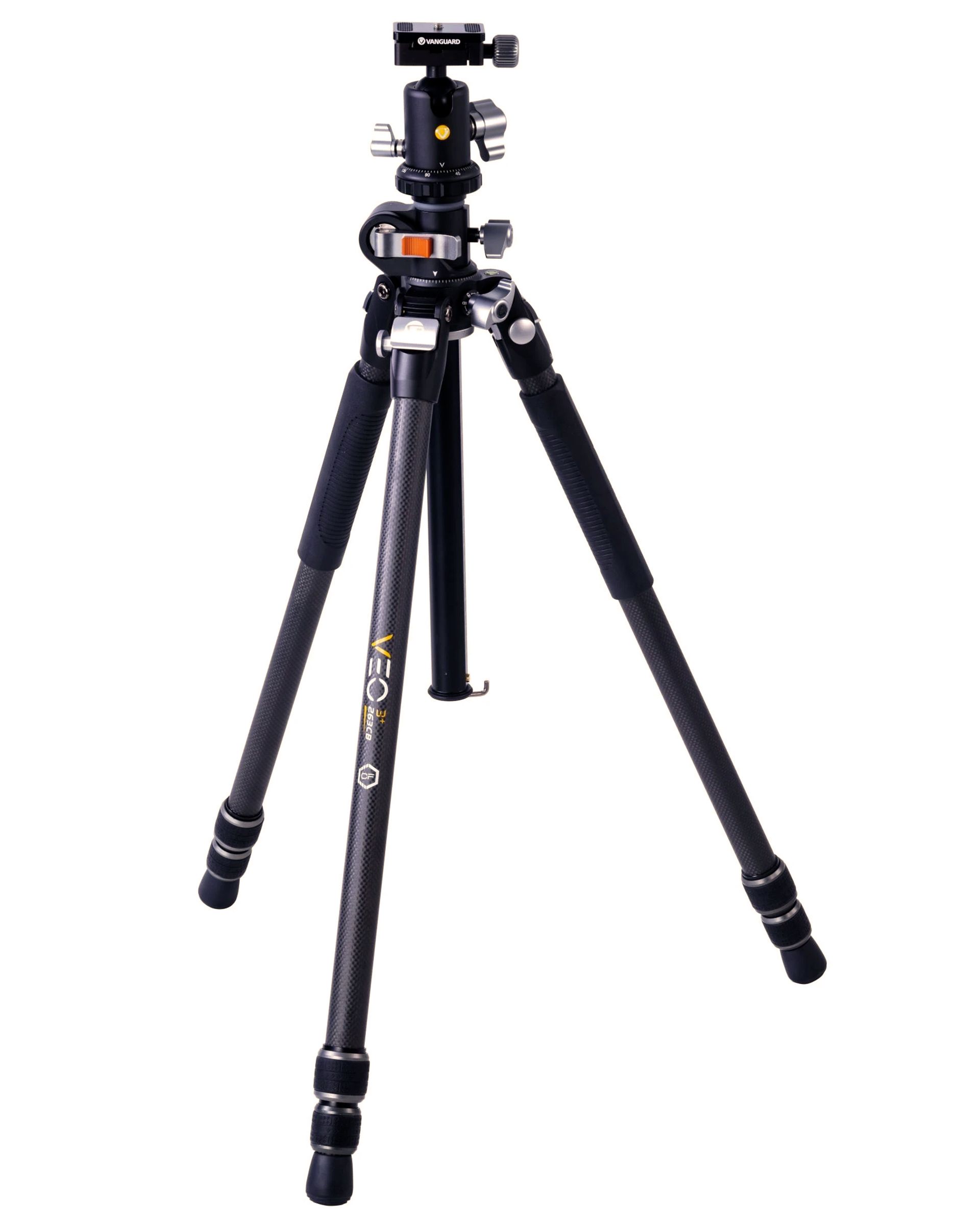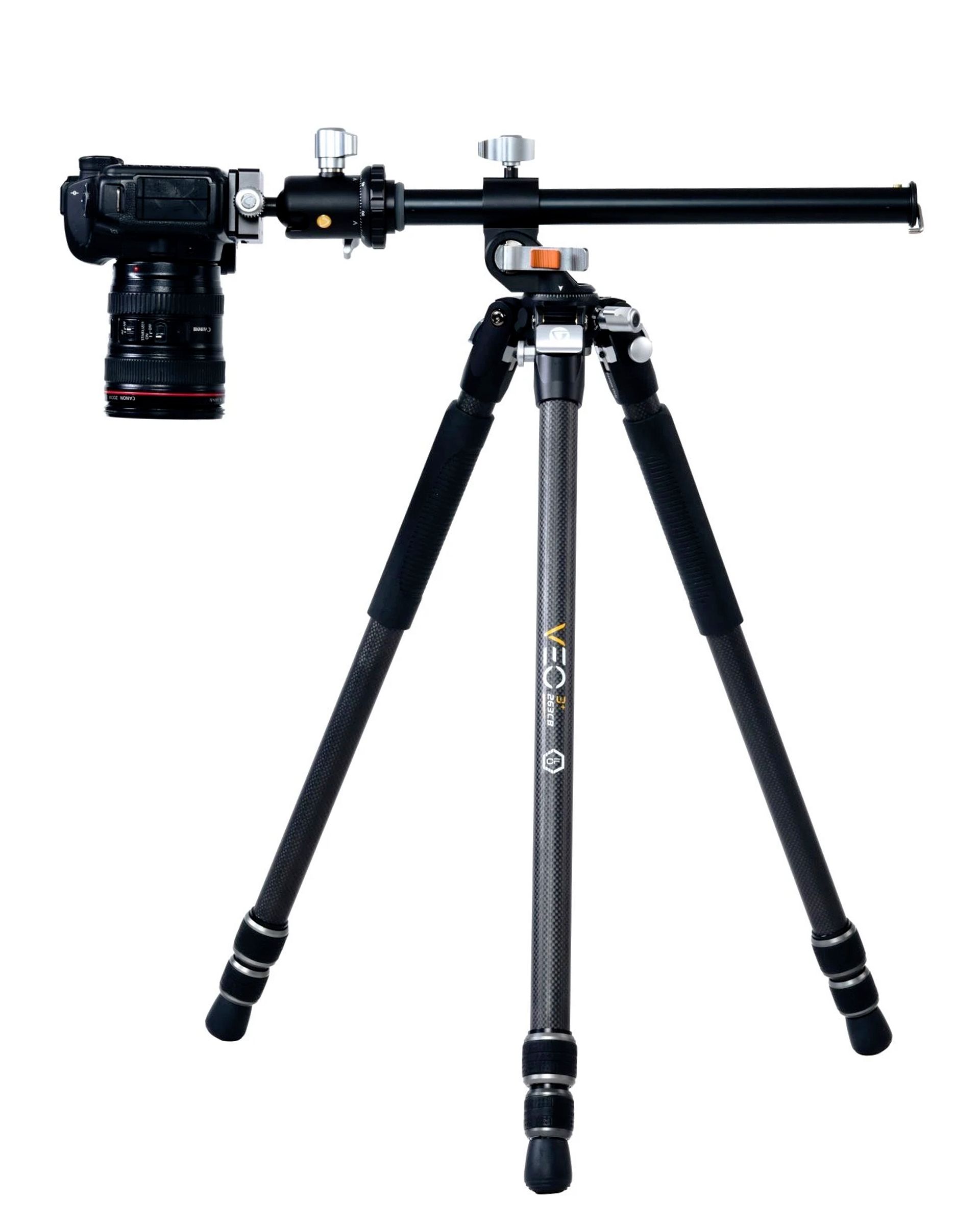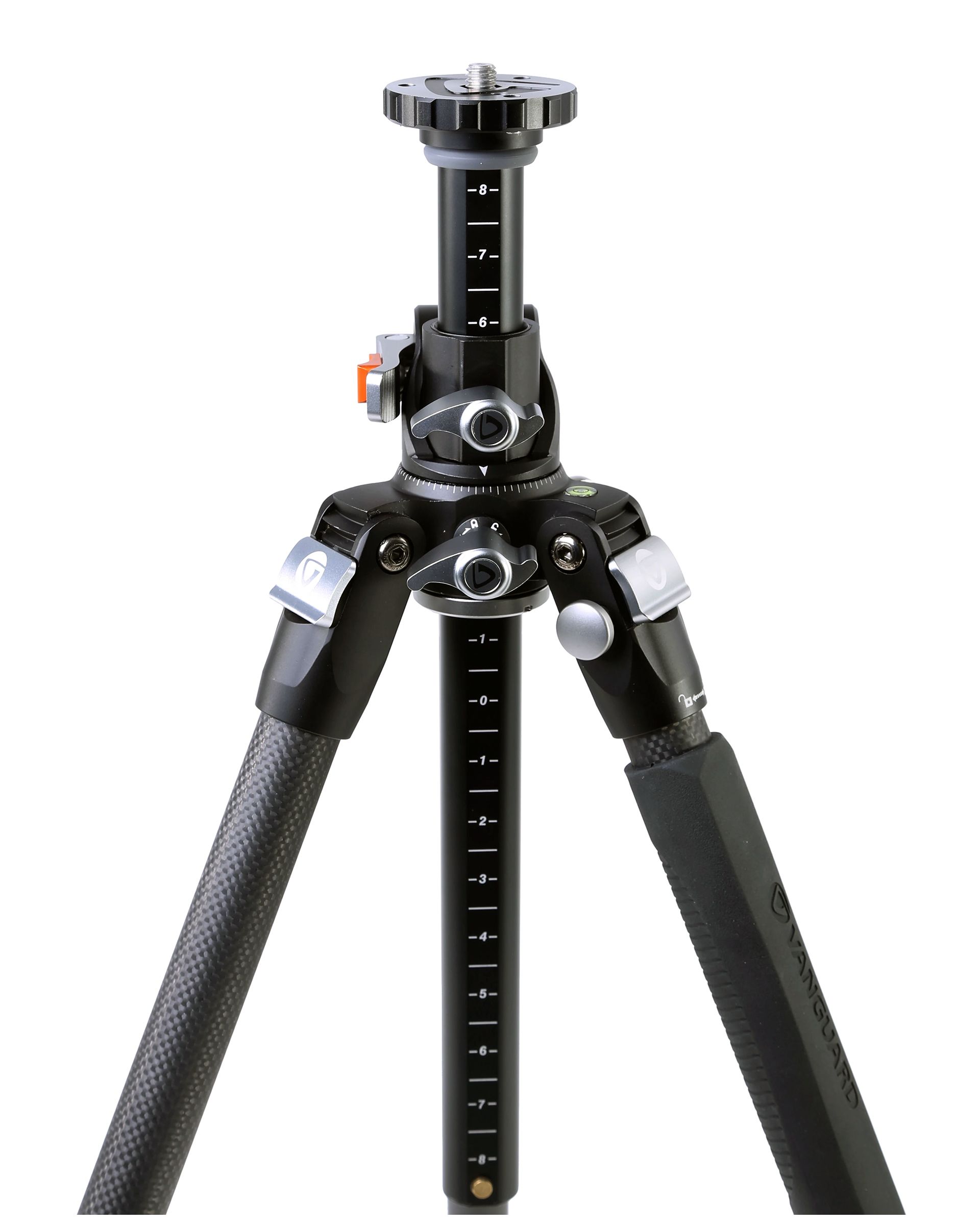What Makes a Good Tripod?
Written by William Algar-Chuklin
A workhorse of any photographer and videographer, the humble tripod is an irreplaceable part of any professional’s workflow. Image stabilisation has come a long way in recent years, but will never replace a great tripod. Let’s have a look at what makes a good tripod and what you should be on the lookout for!
The rundown:
- Opens up new creative options
- Helpful for video AND photography work
- Lots of different options, so find one perfect for your needs

I’ve been using tripods for many years now. They’re versatile, and let you take shots that would be impossible to do handheld. When travelling the first thing I pack is my carbon fibre compact tripod, since a lot of the night photography I enjoy requires one. Let’s talk about the different features of a tripod and how they can help your next project!
The Common Features of a Tripod
Today we’ll be using a Vanguard VEO 3+ 263CB Pro carbon fibre tripod as an example, and looking over the different parts of this light and sturdy tripod.
The head and mounting plate

Tripods generally come with a head, although they can also be purchased separately on some models. The most common type of head for photography is the ballhead pictured above, but there are also 3 way heads and fluid heads that are more suitable for videography.
Ballheads are preferred for photographic work due to their small size, excellent range of motion and locking positions.
The VEO 3+ for instance gives you independent horizontal rotation control and a nice locking mechanism for positioning your camera with the ball head. I find that having separate controls really lets you dial in positioning, which can be really important for creating multiphoto panoramas or trying to achieve any sort of specific composition.
Video specific fluid heads focus on smooth motion, and let you control tilt and pan motion independently. They’re designed to give you fine control and enable you to pan or tilt smoothly during a shot. They are still an option for photographers, but aren't commonly chosen over a ballhead.
Key things to consider when selecting a head to mount are the weight load that it can handle, how easy it is to rotate and lock, and the mounting head (arca-swiss is the most common and can affect which 3rd party accessories you can mount).
Arm Locking Mechanisms

The arm locking mechanisms will determine the range of motion and how low to the ground a tripod can sit. This will be important when shooting low, or on uneven terrain.
Since you’ll be using these locks often, I recommend testing the feel and robustness of the different locks on different tripods. It’s important to make sure these work well to avoid accidental camera damage.
Key things to consider here are range of motion, and the sturdiness of a tripod when fully deployed.
Legs and Central Shaft

Tripod legs generally come in segmented pieces that extend like a telescope out of the larger leg segments. The amount of segments will determine the maximum height that the tripod can achieve, and the leg material will affect the weight and stability of the tripod.
Tripods also come with a leg locking mechanism to control the overall height of the tripod. There are two popular kinds of locking mechanisms, the screw lock and the clip. Each has their pros and cons, but generally a screw lock is sturdier and easy to deploy.
Many tripods also have a central shaft that can be extended and rotated to achieve greater flexibility. The one pictured above also has a hook for hanging a weight or bag, to increase the tripod stability and reduce vibrations.
The Body
The body of a tripod can be made of various materials like carbon fibre, or aluminium. Carbon fibre is desirable for it’s vibration dampening properties and lighter weight, but can be more expensive. Aluminium is the more commonly used material in tripod legs as it is still rigid, but cheaper to produce.
The things I would be considering here are weight vs max height, construction materials, and extra features, like the central shaft’s range of motion and stabilising hook.
You’ll also notice that the 263CB also comes with a spirit level to help with quickly setting up the tripod.
Feet
More advanced tripods will come with customisable feet, from spiked feet for soft surfaces, to the larger rubber feet for hard surfaces.
Sturdy feet are a key component to any tripod and will affect the overall stability of the tripod when out shooting. Good feet will also stop sliding which can cause the tripod to tip and ruin your photograph, or worse yet, damage your photographic equipment.
Overall Considerations
When considering the right tripod for you, it's best to think of what type of situations you’ll be using it in. You’ll be trying to balance cost, weight, sturdiness and features when choosing a tripod.
A good tripod for traveling could be prioritising lighter weight over sturdiness and cost, while sturdiness and light/medium weight would be more important in a landscape tripod. Studio tripods would prioritise sturdiness and heavier weight, since transporting the tripod wouldn’t be as important, and extra weight comes with extra stability. Fun fact: some photographers still use wooden tripods for that reason!
You may also find outdoor macro work requires a tripod that can get closer to the ground, or that you can forgo a central shaft to cut down on weight.
Signing off
Hopefully you’ve got a better idea now of what you’re looking for in a tripod. There are a few considerations when making a purchase, but you really can’t go wrong with a good quality tripod, and often you’ll still be using the same one even after you’re replaced your other equipment multiple times.
If you need more information on cameras and other camera accessories, check out more articles on the C.R. Kennedy blog.
William Algar-Chuklin is a night and travel photographer based in Sydney, Australia. You can check out some of his work at walgarch.com and on Flickr
